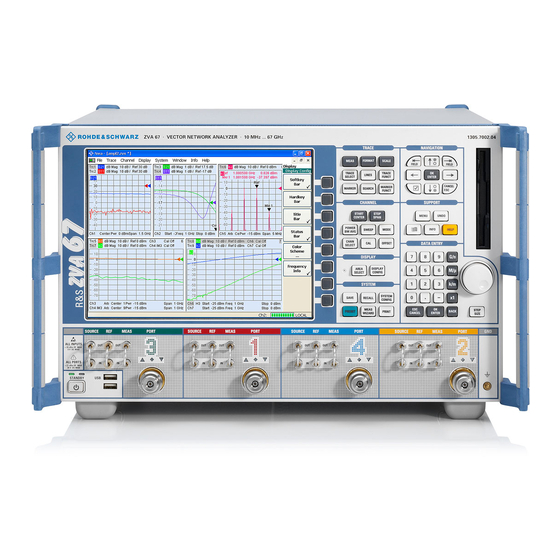
Table of Contents
Advertisement
Advertisement
Table of Contents

Summarization of Contents
Preparing the Analyzer for Use
1.1 Front Panel Tour
Overview of analyzer front panel controls and connectors, including display, keys, and ports.
1.2 Rear Panel Tour
Overview of analyzer rear panel controls and connectors.
1.3 Initial Setup and Operation
Steps for unpacking, setting up, powering on, and basic operation of the analyzer.
1.5 Connecting Accessories and Remote Operation
Connecting peripherals and setting up remote control via LAN.
1.7 System Configuration and Updates
Managing Windows XP settings and performing firmware updates.
Getting Started
2.1 Reflection Measurement
Step-by-step guide for performing reflection measurements.
2.2 Transmission Measurement
Steps for performing transmission measurements.
2.3 Basic Tasks
Fundamental operations: front panel control, data entry, and diagram scaling.
System Overview
3.1 Basic Concepts
Core concepts: resources, setups, traces, channels, and data flow.
3.2 Screen Elements
UI components: menus, softkeys, hardkeys, diagram areas, dialogs, formats.
3.3 Measured Quantities
Description of measurement results: S-parameters, impedance, admittance, wave quantities.
Calibration
3.4.1 Calibration Standards and Kits
Information on physical standards and kits for accurate calibration.
3.4.2 Calibration Types
Summary of different calibration methods and their applications.
3.4.3 Automatic Calibration
Advantages and procedure for automatic calibration using calibration units.
Optional R&S ZVA Extensions
3.5.1 Time Domain Analysis
Analyzing signals in the time domain using frequency data.
3.5.2 Arbitrary Frequencies and Mixer Measurements
Measurements at arbitrary frequencies, mixer and harmonics.
3.5.5 True Differential Mode
Testing differential and common mode signals of balanced devices.
3.5.11 Noise Figure Measurement
Measuring the noise figure of a DUT.













Need help?
Do you have a question about the ZVA50 and is the answer not in the manual?
Questions and answers